
The Guy Mabee Special Victress S1A
By Bruce Gross (based on an article that appeared in Victory Lane magazine and on the web site www.Forgottenfiberglass.com)
Photos by Steve Temple
Texas Oilmen Guy and Joe Mabee set out to build the best car in the world. What transpired was a Bonneville World Record holder; a Pike’s Peak entrant, an SAC and SCCA Road Racer, a show car, and even a Dragster. No maybes about it, you can certainly call this racer “Special.”
Midland, Texas Oilmen Guy and Joe Mabee had a dream of building their own sports car that would compete with and defeat the best that the world had to offer. Created in dreams and pushed into reality through the ideas of Chuck Manning’s articles in Road and Track, the talents of Denny Larsen and engine ace Ray Brown, Guy and Joe Mabee built their special to 1953 world-class standards.
The Guy Mabee Drilling Company Special used three-inch chrome moly tubing for its main frame structure, Kurtis front and rear torsion-bar suspension with Ford front straight axle and a Ford tubular rear axle with Halibrand quick-change center section. As per Manning’s plans, Lincoln drum brakes were modified with welded finning on front and rear, to help the 1800-pound car slow down from its planned speeds.
Ray Brown modified a Chrysler Hemi, one of the first, boring to 353 cubic inches using a Harmon & Collins magneto, Hilborn injection, a Chet Herbert roller cam and Belond headers mated to a Ford gearbox that drove Ford 16-inch steel wheels. The fiberglass Victress-bodied Special was ready for Bonneville.
Plans called for the car to do double duty as a Bonneville record car and a road racer, but the Salt Flats were to be first. The 1953 Bonneville Nationals were the car’s first steps of many into competition. Running on alcohol-nitro, Joe Mabee piloted the car to a 203.105 mph two-way average. “The World’s Fastest Sports Car” and “Streetliner” (owing to its sleek Victress body) were names coined by the press and advertisers of the “Mabee Special.”
The year 1954 saw rule changes at Bonneville. The Sports Cars were now to run on gasoline. And 1954 also saw the car prepared to run road races. The Mabee received re-worked suspension, a Kurtis tubular front axle and diagonal torsion arms, Kurtis pitman arm and a relocated steering box. The drum brakes were discarded in favor of new Halibrand Indy double-spot brakes all around.
Halibrand pin-drive, 16-inch knock-off disc wheels replaced the Ford items. Because of its road race plans, a German ZF four-speed was mounted behind the Chrysler mill. Now 389 cubic inches and running a modified injection system, the engine produced about 350 horsepower on gas. Three Stromberg dual-throat carbs were to handle duty on road courses.
That year at Bonneville, in the Open Sports Car Class over 1500cc, Joe Mabee averaged 187.66 mph with a top speed of 196.50 on the down run. Not a bad speed for a full-bodied sports car on pump gasoline. The Mabees took the car home to Midland and began prepping it for road racing. Painted red and white, the car was being readied for another young Texan to drive: his name was Carroll Shelby. (If you don’t believe this, read The Carroll Shelby Story, c1965, 1967 by Carroll Shelby, Chapter 6).
Ol’ Shel was to help develop this V-8 powered, tubular chassied, built-in-America sports car and drive it to “blow off the Europeans, but good.” Shelby never did get to drive this 200 mph car. Instead, Guy Mabee agreed to buy Carroll an Aston Martin and help finance his European racing.
This particular rest-of-the-story is another part of history, one that continues to this very day. The Mabees and this car possibly could have been responsible for some of the ideas and successes of Carroll Shelby. The January 1955 issue of Road and Track magazine ran a race report about the last SAC race at March Field Air Force Base.
There in a picture is the Mabee Special, starting on the front row, car #104, racing with the best of them. Joe Mabee and the car’s teething problems bested them a ninth place finish in their first race. Guy and Joe took the car back to Texas to race in local SCCA events at tracks such as Bergstrom, Fort Worth, Dallas, Corpus Christi, and events in Oklahoma and Arkansas.
Joe usually drove the car but he also loaned it out to friends and fellow racers to try. The car was fast but even with its four-wheel disc brakes (and small master cylinder), stopping the car became its biggest problem. Handing was good but by the end of 1955, the European cars were just getting better and better. Even Joe decided to give up on his dream car.
Guy put the car up for sale at a used car lot in Midland. El Paso, Texas car dealer (and 2nd place finisher in the 1st Pan American Road Race in 1950) Tommy Deal, bought the car. Tommy entered it in a couple of road races in the El Paso area as “The Deal Special.”
From this point, ownership of the car becomes harder to follow. Deal owned it up until about 1958. A couple of owners later, George Brazil, a local hot rodder/fabricator/engine builder, bought the now aging car. George fabricated a manifold for the big Hemi and mounted a Roots-type blower under the now scooped and bubbled hood.
The “Chrysler Special” was raced in SCCA events in Arizona and New Mexico, with driving chores shared with Tommy Drisdale (also an ex-Mexican road racer). George even raced the car in a few drag races in El Paso and Sunland Park, New Mexico. Road racing came to El Paso in 1959. The local 20-20 Club and the SCCA acquired use of the county-owned Ascarate Park.
One regional and two national events held at Ascarate Lake entertained such cars as Porsche, Ferrari, Maserati, Lotus (one of which even ended up in the lake) and Scarabs. Yes, in 1960, Augie Pabst and his Meister Brauser team showed up and blew the Europeans in the weeds at the track’s last race.
The tree-lined course following one shore of Ascarate Lake, and using the drag strip as its straight, lent itself as a great prospect to racers. The ex-Mabee Special was entered by Brazil and driven in the first race by Jim Siegel. Siegel practiced the car and he too complained about the lack of brakes. Needing to get a good start, an over-anxious Siegel blew up the engine at the start of the race.
In need of a new life and new engine, the car was sold to another local used car dealer, Bob Feste. Apparently Bob had grand visions for the Mabee. Feste commissioned expert panel beater and local color Herman Kluge to pull the old Victress body off and design and hand-build a new aluminum body.
It is said that Herman used to pilgrimage to Indy each year to straighten out bent bodies for the boys of the 500. He’s also credited for inventing the first automated louver-making machine. Hot rodders would bring in hoods, trunks and panels for Herman to “punch” in louvers while they waited.
The late ‘50s saw the Detroit automakers go to dual headlights on their cars. Along that style, Kluge beat a beautiful body onto the old chrome-moly frame. A modern envelope body, large front grille, sculptured fenders, head fairing and dual head and taillights.
Bob Feste, Charlie Royal (yes, another old Mexican road racer) and friend Brazil took the newly bodied car up to Albuquerque to have a Buddy Carter-built Buick V-8 installed. The Buick would be a lighter, more modern and more capable road engine. Hilborn injection, a Vertex magneto and a new long-range fuel tank were installed to complete the new “Buick Special.” Final tuning was done at the Unser’s garage for an assault at Pikes Peak.
Up to Unser Mountain, Pikes Peak. Trying unsuccessfully to convince Tommy Drisdale to drive the car on the famous hill climb, Charlie Royal entered and drove the car in the 1960 event. Untried and unproven, Charlie qualified the #8 Buick Special in 10th spot. Group 1, 3001cc—unlimited Sports Cars—was the last class to run.
An unwelcome July 4th storm played havoc on the event. Up on the hill, rain, fog and snow made the course dangerous. Before the last three cars could make their runs, a crash occurred and a safety vehicle started down the hill to check the course. Spectators, thinking and hoping that the event was over, started down the hill. The organizers had no choice but to put an end to the race. The Mabee Special didn’t get to make its run.
The class was won by Ak Miller in his home-built Devin-Olds special. Miller beat Corvettes, Dick Morganson’s Testa Rosa, three Bocars, an Austin Healy and a Buick Special. Like a bad novel, the story of the car’s racing history fades away without a real climax.
After considerable time and money, Bob Feste had to sell the Mabee. Tommy Deal brokered a transaction to a Mexican named Hector “Porky” Chacon. The car was entered in a few races and car shows in Mexico in the early ‘60s. The last documented race entered by the “Buick Special” was a minor road race celebrating the opening of a shopping complex in Juarez on November 7, 1965.
“El Primer Gran Primo Juarez.” Chacon had sponsorship from Hotel Sylvias on his maroon-colored #91 race car. Also identified as a “Curtiss,” the Mabee Special is not listed in the results.
In 1983 I was told about a “Ferrari” sports car on a ranch west of Juarez. A friend’s brother, a Mexican national, brought in a local Mexican magazine from 1965 with this car on the cover. Here was Hector Chacon standing in front of his proud possession, in color. A Ferrari it was not. The magazine said it was an injected Buick “Curtiss.” I had to see this car.
As my guide, Joe Franco took me further into Mexico than I really needed to be. Finding the correct dirt road and heading into the unknown, we finally found the “ranch.” Amongst the cacti, weeks, trash, chickens, old junk and old junk cars, there it was. But what was it?
A deteriorated aluminum body, no doors, hood, trunk, engine, transmission, etc. There were, however, real Halibrand mags on front, huge Halibrand disc brakes behind the wheels, Kurtis suspension complete with Houdaille shocks at all four corners, Engelbert racing tires, maroon paint and faded lettering, “Hotel Sylvias.” I didn’t know why (yeah, sure) but I wanted this car.
For ten years I told no one about this car and for ten years I tried to get the owner to sell it to me. Finally, one day in 1993, Joe showed up to tell me that the ex-wife and son of Hector Chacon were ready to sell. From one day, out-of-sight-out-of-mind, to sitting in my driveway the next day.
Now the research. Phone calls. Lots of phone calls. With the Kurtis suspension, I started looking for and calling Kurtis experts. Was this perhaps a Frank Kurtis special? You know, a one-off Hagemann bodied Kurtis, or maybe a Sutton or maybe even a lost Troutman-Barnes? Sending out detailed photos of the car finally produced results.
No it definitely was not a Kurtis, yes it had Kurtis suspension, but the chassis definitely wasn’t. I learned that Frank sold chassis and suspension kits to the public. This was a home-built special—early, but the body dictated late ‘50s—dual headlights?
Going backwards from Chacon to—who? Posting drawings of the car at local shops, talking to old roadracers, asking anyone and everyone I knew, old drag racers, old hot-rodders—old hot rodders—call George Brazil, I think he’s still alive up in Albuquerque.
Sure enough, though a little fuzzy, George knew the car. The more we talked the more he remembered. He said what I had was the old “Mabee Special.” The what? Said it came out of Midland. Said it ran over 200 mph at Bonneville (sure). Said it had a Chrysler Hemi at one time and a “Devin” body (yeah, right). He told me about Herman Kluge, “Herman the German?” And, I was told about Charlie Royal and Pikes Peak.
I couldn’t yet put it all together but I believed this man, after all he did work on cars that ran the old Mexican Road Race. I looked up Mabee in the Midland phone book. There were a lot of things with “Mabee” before other names—Mabee Oil Exploration, Mabee Foundation, Mabee Ranch, etc.
A few phone calls and messages later and I had Joe Mabee on the line. He confirmed, told stories, shed light, answered questions, told all. Next came the magazine search. I have a few old magazines lying around and of the one I have, there they were, articles, write-ups, results and pictures. At least I identified the chassis as the real thing.
I had confirmed the car’s history up to Pikes Peak. I even found a picture of the car running in the local Ascarate Lake event in the newspaper. The book, The Pikes Peak Race by Stanley L. DeGeer, 1992, showed that “Carroll” Royal entered a Buick (homemade) in the 1960 event.
I needed a picture. A trip to the Pikes Peak Auto Museum produced nothing. Visits to the archives of Colorado Springs newspapers provided the story of the event, a mug shot of Charlie Royal and a mention of his Buick Special #8. I made calls to Road and Track, Petersen Publishing, Dean Batchelor (who actually remembered the Mabee Special as a Bonneville car surprise) and Dave Friendman, looking for a man named Jack Brady.
Jack had a photo credit and a story in the 1960 R&T about the Pikes Peak event. Perhaps he had other unpublished photos. Jane Barrett of Petersen Publishing and Craig Schafer of the Pikes Peak Auto Museum came through, not with Jack Brady, but with a photo of the car. Pikes Peak, 1960, going uphill, Charlie Royal driving, Kluge body, #8, dual headlights!
I own the Mabee Special—or what’s left of it. It needs to be totally restored, but to which event, which era, and with what body? Surely there must be a Victress body lying around. What engine, wheels, transmission? The Mabee was Special: Bonneville World record holder, SAC Road Racer, local SCCA racer, dragster, show car, Pikes Peak entrant. Maybe it will be special again.

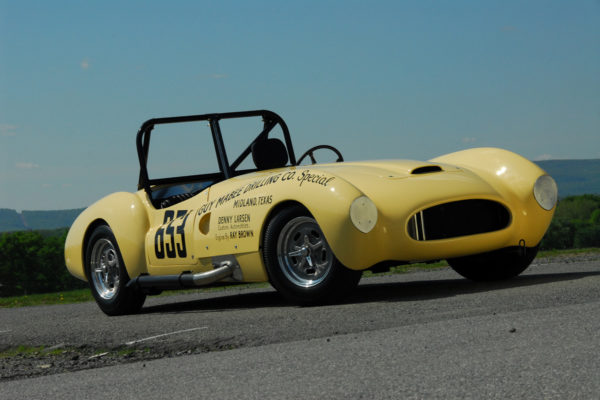
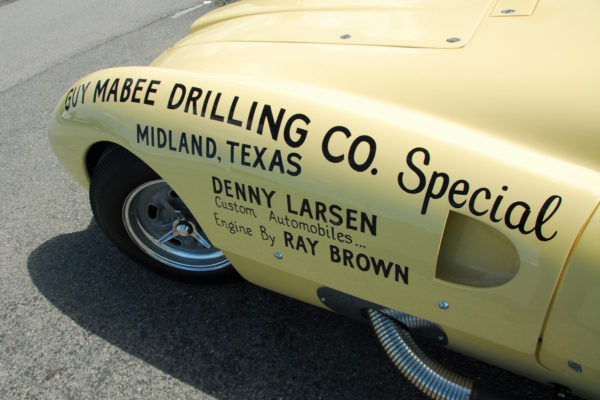
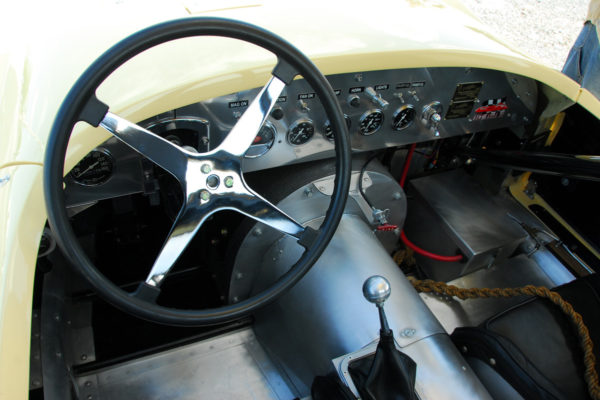
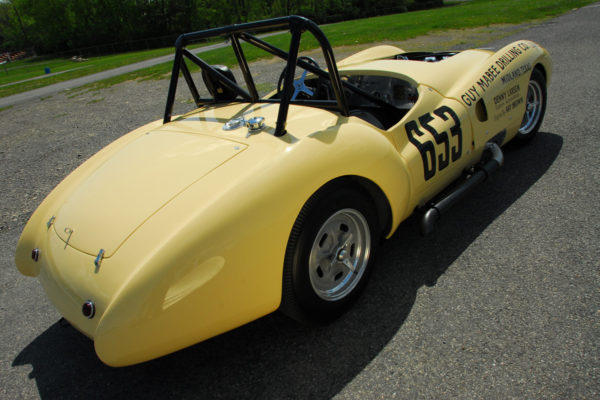
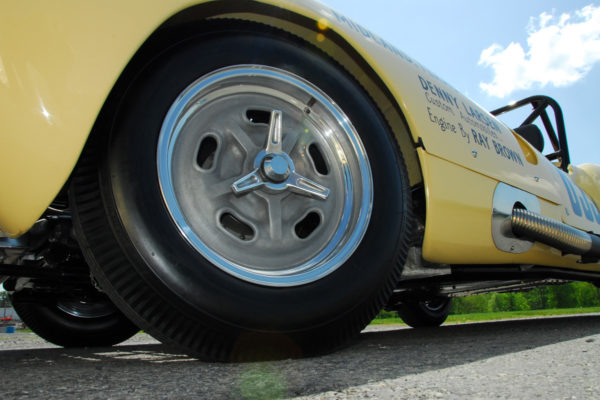
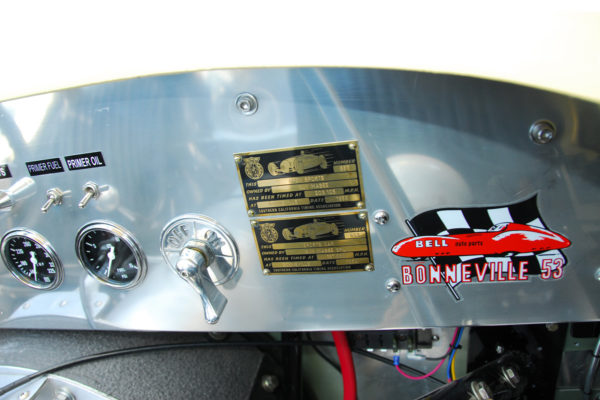
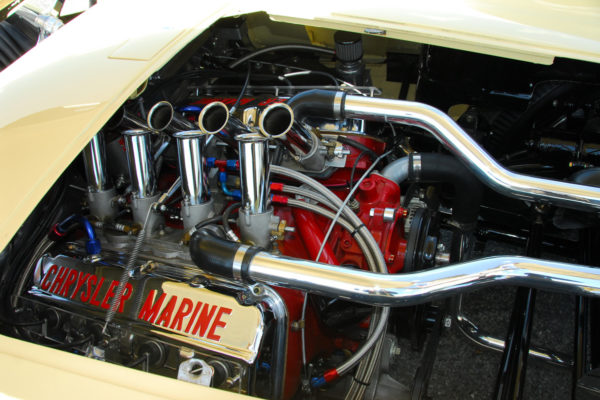
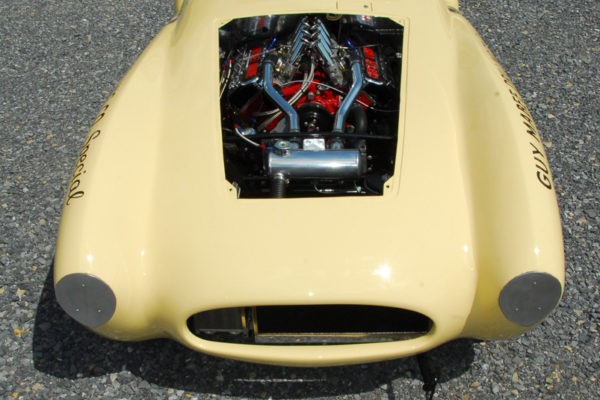
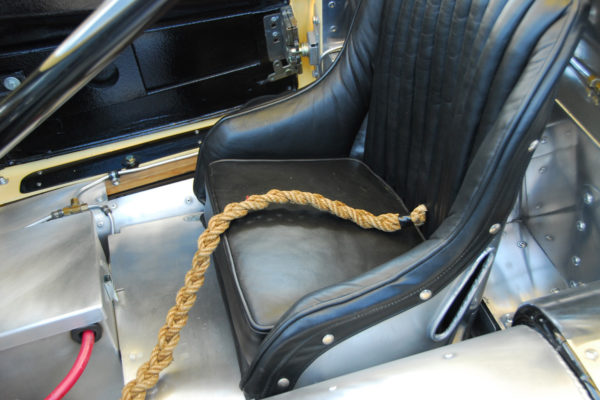
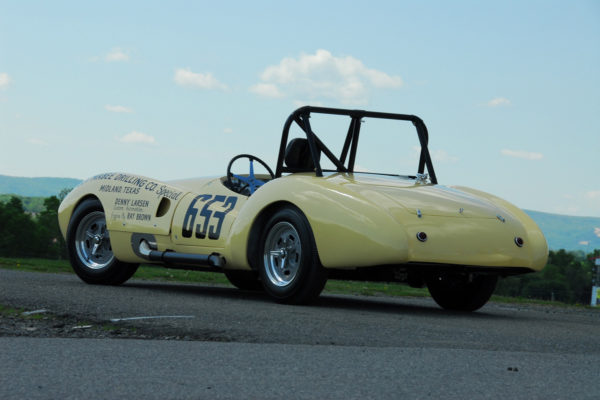
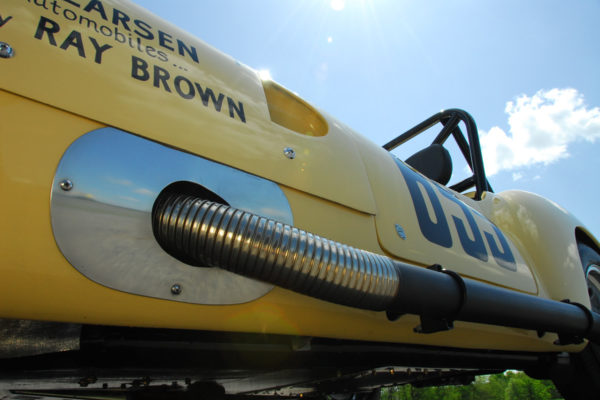
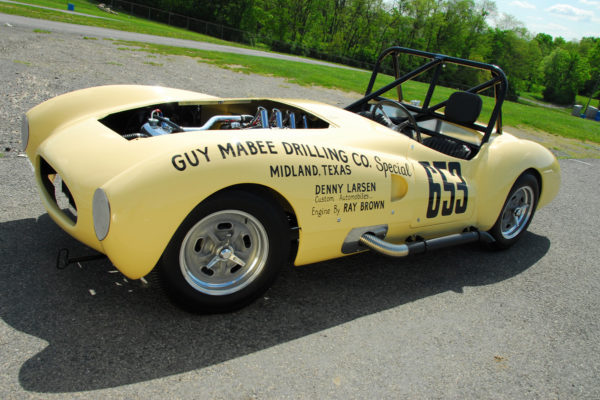
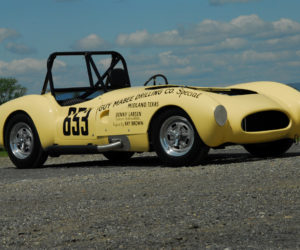
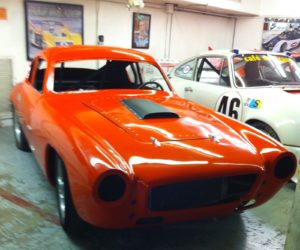
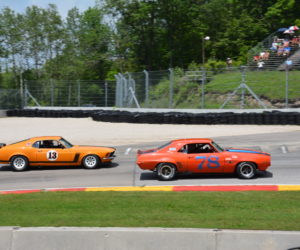
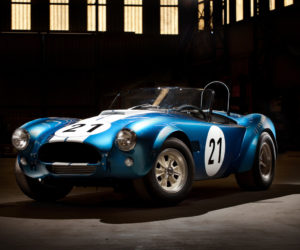
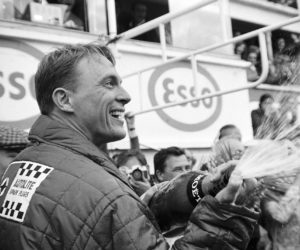
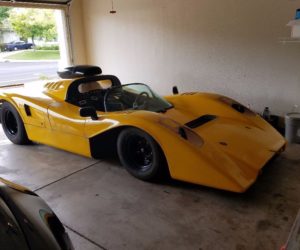




Comments for: DEFINITELY, MABEE
comments powered by Disqus